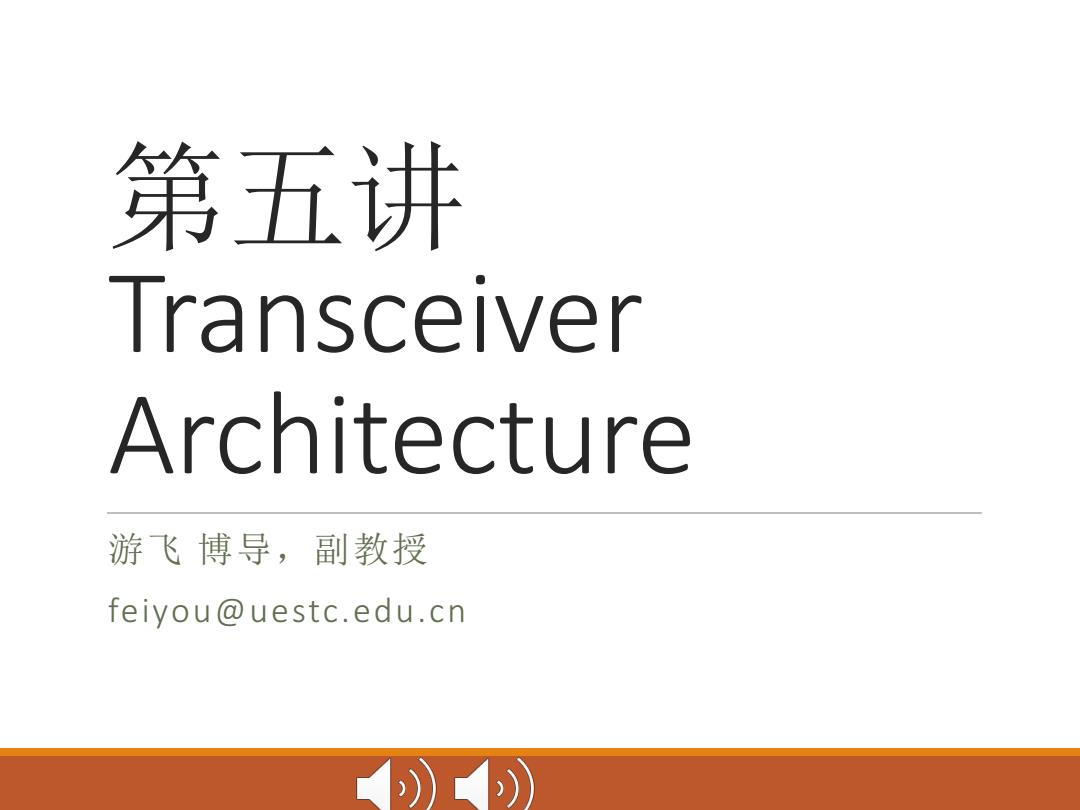
第五讲 Transceiver Architecture 游飞博导,副教授 feiyou@uestc.edu.cn ))
第五讲 Transceiver Architecture 游飞 博导,副教授 feiyou@uestc.edu.cn
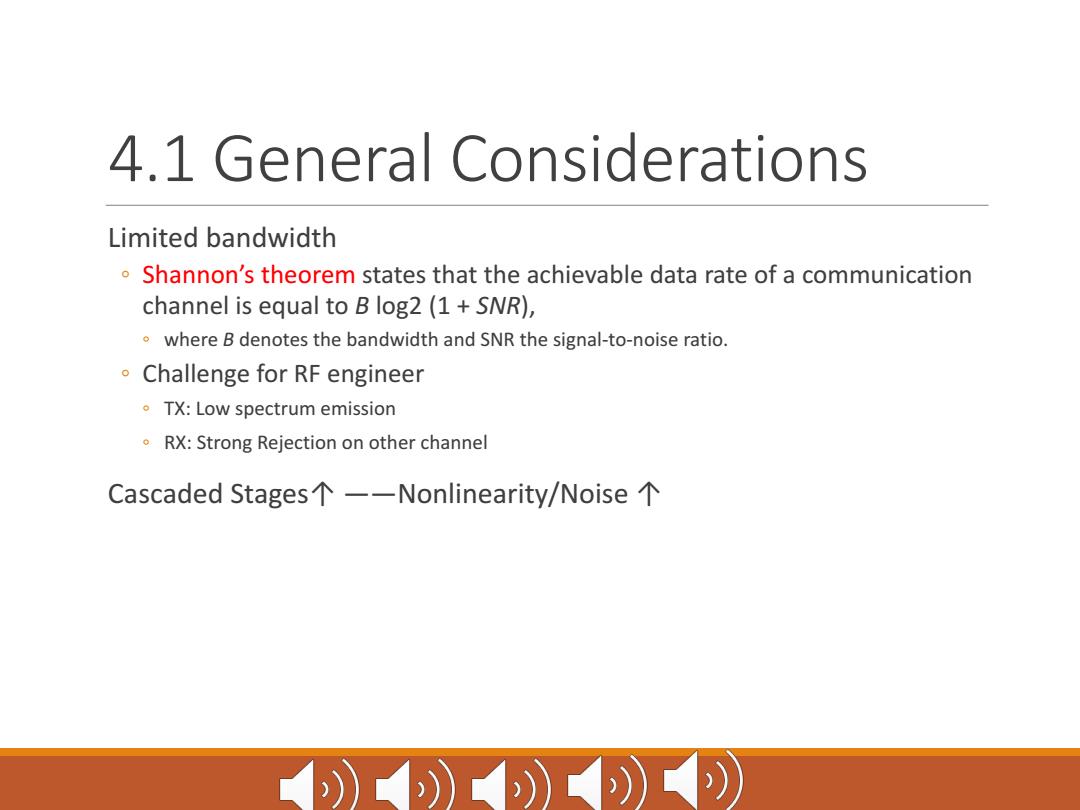
4.1 General Considerations Limited bandwidth Shannon's theorem states that the achievable data rate of a communication channel is equal to B log2(1+SNR), where B denotes the bandwidth and SNR the signal-to-noise ratio. Challenge for RF engineer TX:Low spectrum emission RX:Strong Rejection on other channel Cascaded Stages个一一Nonlinearity/Noise个 )))))
4.1 General Considerations Limited bandwidth ◦ Shannon’s theorem states that the achievable data rate of a communication channel is equal to B log2 (1 + SNR), ◦ where B denotes the bandwidth and SNR the signal-to-noise ratio. ◦ Challenge for RF engineer ◦ TX: Low spectrum emission ◦ RX: Strong Rejection on other channel Cascaded Stages↑ ——Nonlinearity/Noise ↑

4.1 General Considerations Interference Suppression Figure 4.1.(a)Transmitter and (b)receiver front ends of a wireless system. Transmitted Power Channel Amplifier BPF Adjacent Channels (a) Band-Pass Filter Alternate Response Adjacent Adjacent Channel Channel Low Noise Desired Amplifier Channel BPF (b)
4.1 General Considerations Interference Suppression

4.1 General Considerations Figure 4.2.Hypothetical filter to suppress an interferer. A 900-MHz GSM receiver with BPF 200-kHz channel spacing must Response tolerate an alternate adjacent 20 dB 35 dB channel blocker 20 dB higher than the desired signal. Calculate the Q of a second-order 900 900.4 f(MHz) LC filter required to suppress this interferer by 35 dB. Equation 4.2 Lo2 ZT(j@)2= (1-LCw2)2+L2w2/R2 For an attenuation of 35 dB(=56.2) Equation 4.3 at 900.4 MHz,this quantity must be Lo2 equal to R2/56.22 (why?).Solving for R2 =2.504×10-10 L202/R2,we obtain Recall from Chapter 2 that Q=R/(Lw)=63,200
4.1 General Considerations A 900-MHz GSM receiver with 200-kHz channel spacing must tolerate an alternate adjacent channel blocker 20 dB higher than the desired signal. Calculate the Q of a second-order LC filter required to suppress this interferer by 35 dB. For an attenuation of 35 dB ( = 56.2) at 900.4 MHz, this quantity must be equal to R2/56.22 (why?). Solving for L2ω2/R2, we obtain
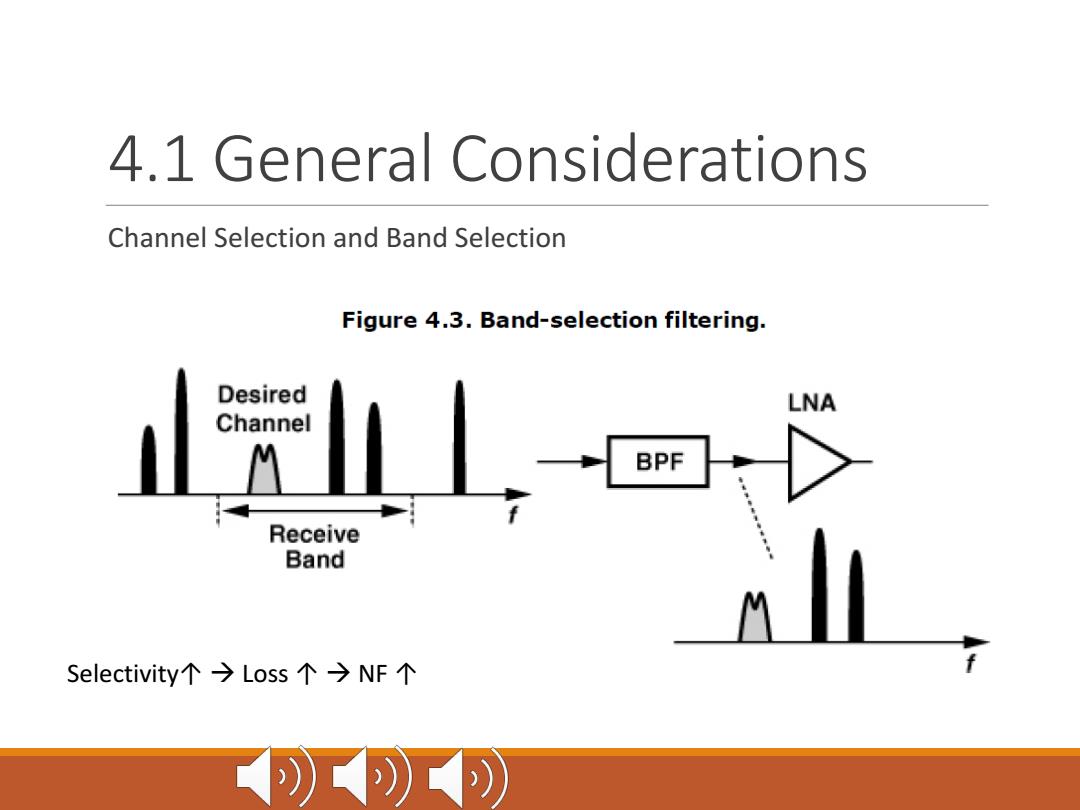
4.1 General Considerations Channel Selection and Band Selection Figure 4.3.Band-selection filtering. Desired LNA Channel BPF Receive Band Selectivity个→Loss个→NF个
4.1 General Considerations Channel Selection and Band Selection Selectivity↑ à Loss ↑ à NF ↑
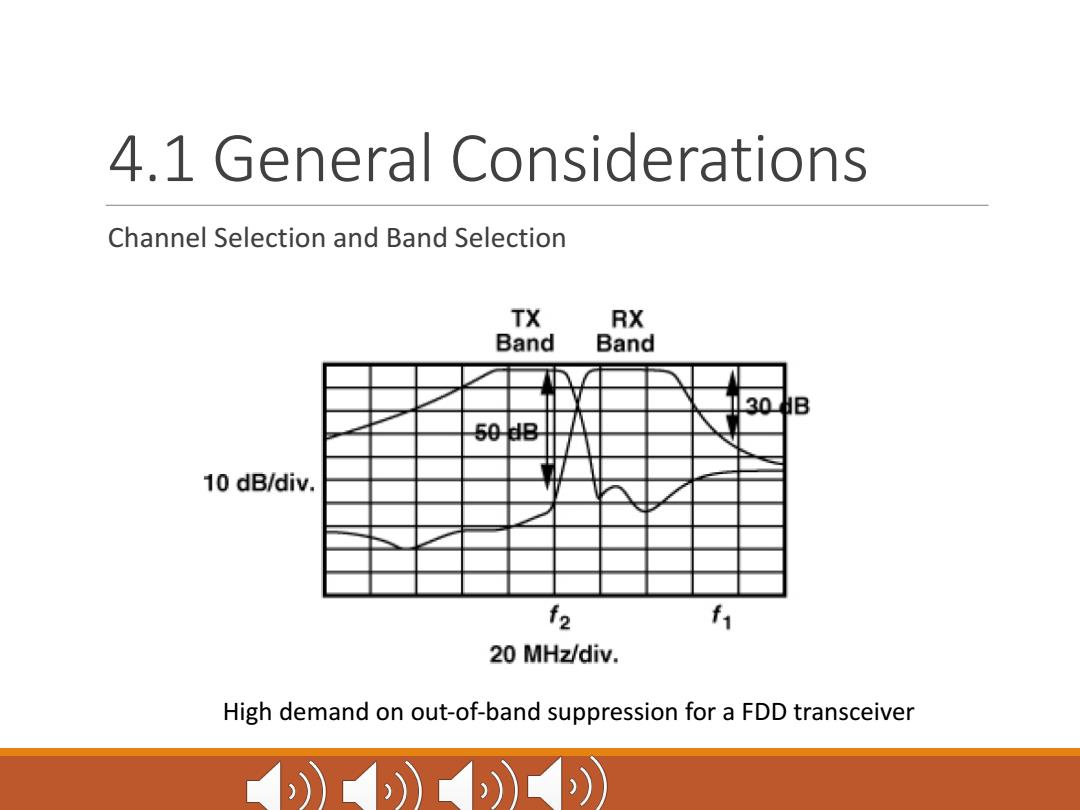
4.1 General Considerations Channel Selection and Band Selection TX RX Band Band 30中B 50B 10 dB/div. f2 f 20 MHz/div. High demand on out-of-band suppression for a FDD transceiver ))))
4.1 General Considerations Channel Selection and Band Selection High demand on out-of-band suppression for a FDD transceiver
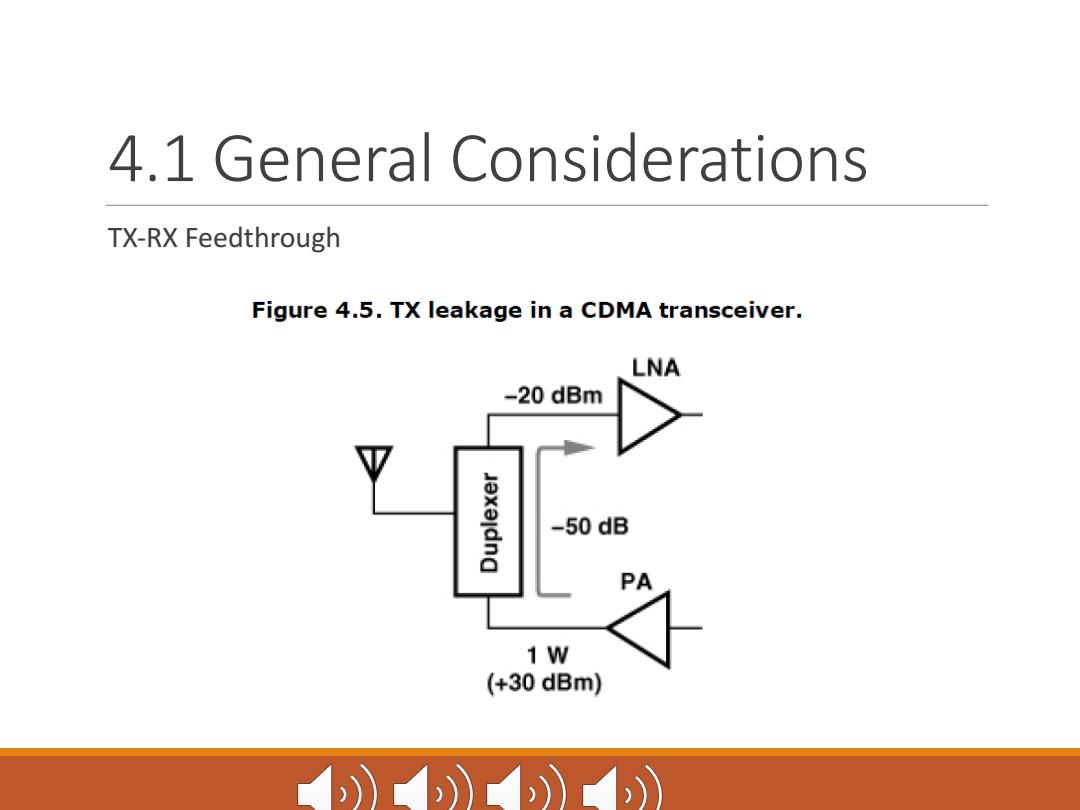
4.1 General Considerations TX-RX Feedthrough Figure 4.5.TX leakage in a CDMA transceiver. LNA -20 dBm -50dB PA 1W (+30dBm) ))
4.1 General Considerations TX-RX Feedthrough
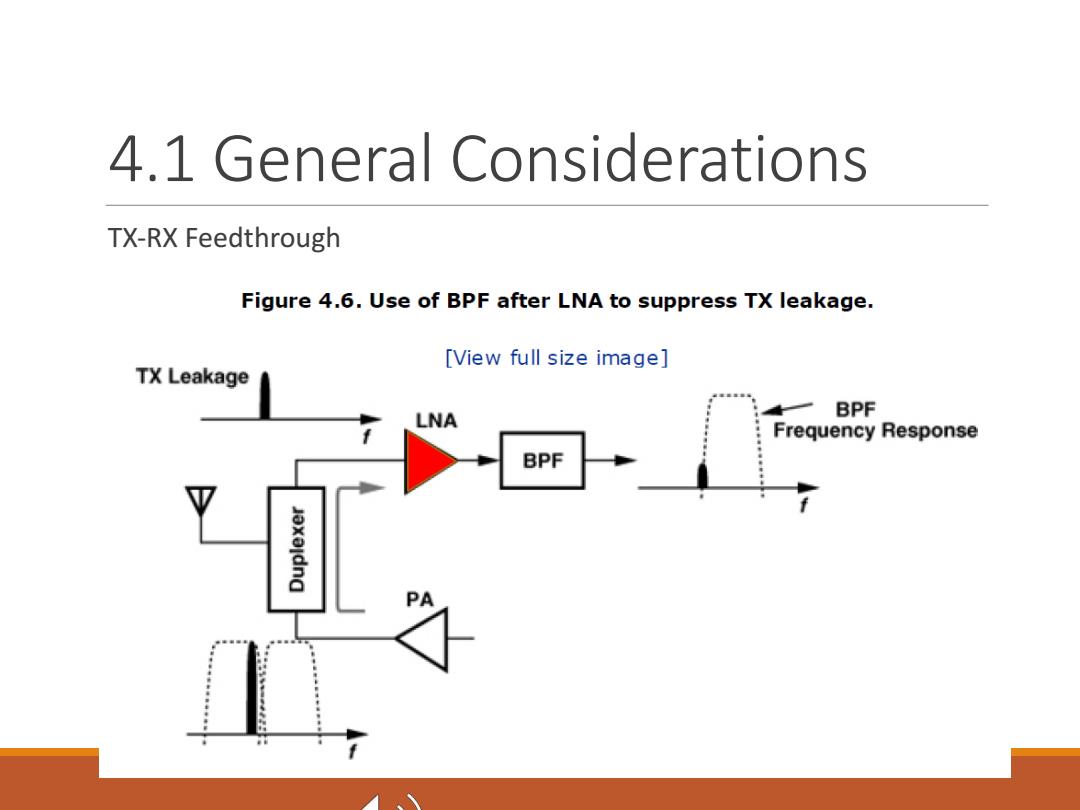
4.1 General Considerations TX-RX Feedthrough Figure 4.6.Use of BPF after LNA to suppress TX leakage. [View full size image] TX Leakage LNA BPF Frequency Response BPF Jaxajdna
4.1 General Considerations TX-RX Feedthrough
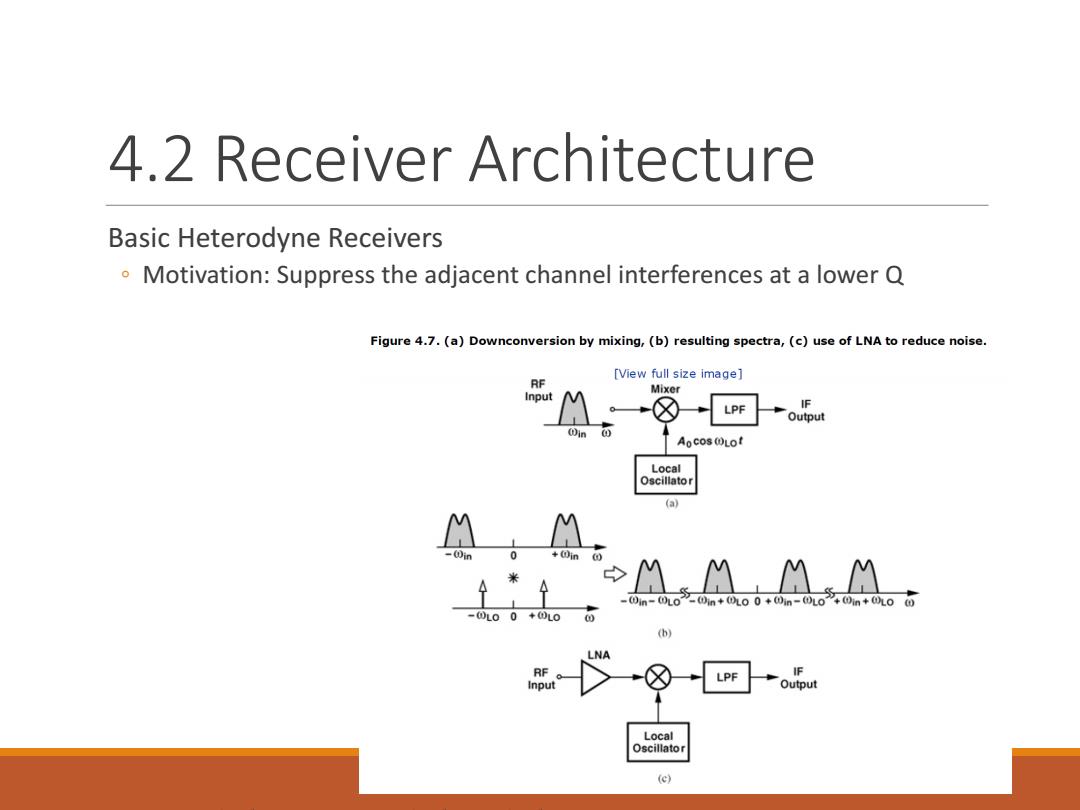
4.2 Receiver Architecture Basic Heterodyne Receivers Motivation:Suppress the adjacent channel interferences at a lower Q Figure 4.7.(a)Downconversion by mixing,(b)resulting spectra,(c)use of LNA to reduce noise. [View full size image] RF Mixer Input LPF IF Output Aocos OLof Local Oscillator -0n-0Lo-n+00+0n-0Lo+0n+00 -0L00+0L0 (b) LNA RF LPF F Input Output Local Oscillator (c)
4.2 Receiver Architecture Basic Heterodyne Receivers ◦ Motivation: Suppress the adjacent channel interferences at a lower Q
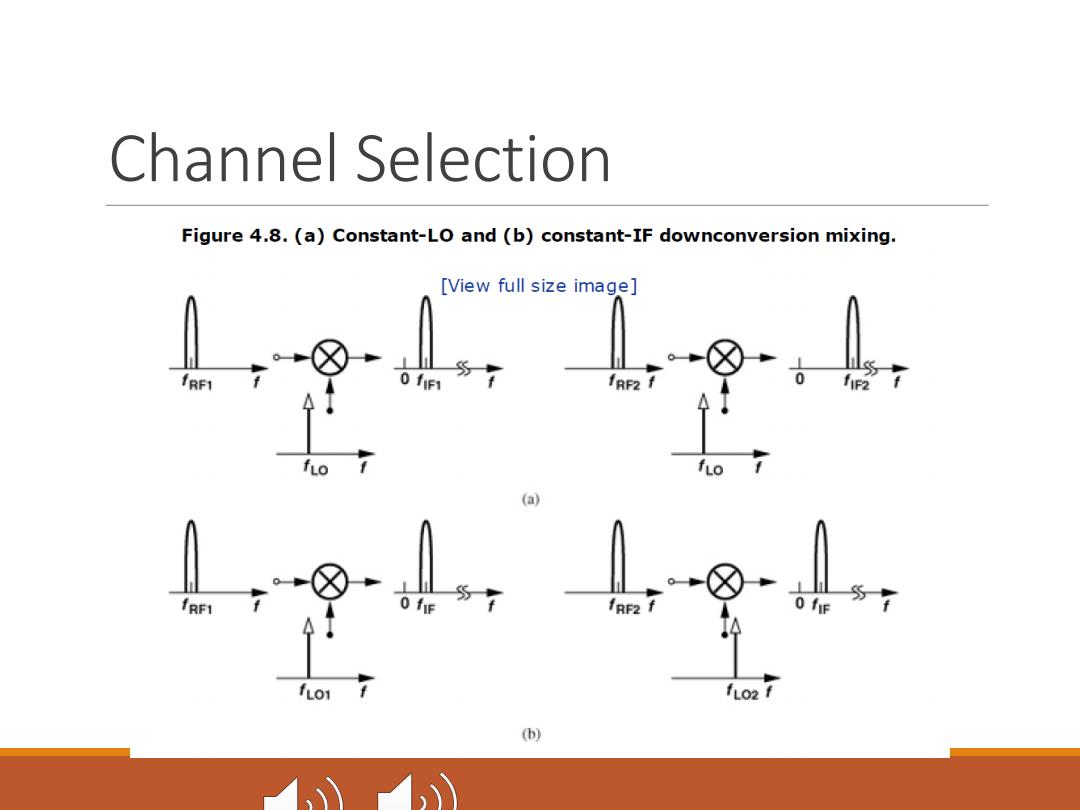
Channel Selection Figure 4.8.(a)Constant-LO and (b)constant-IF downconversion mixing. [View full size image] a 正 fRF2 fLoz f (b)
Channel Selection